Slugs, the slimy, slow-moving creatures we often encounter in our gardens, have intrigued and baffled many due to their peculiar nocturnal habits. Understanding why slugs come out at night is crucial for those looking to protect their plants and maintain a healthy garden environment.
Slugs are primarily nocturnal, meaning they are most active during the night. This behavior is not just a random choice but a survival strategy, allowing them to thrive and avoid their predators. By exploring their nocturnal lifestyle, we can gain insights into their preferences, habitats, and feeding habits, enabling us to manage and control their presence more effectively.
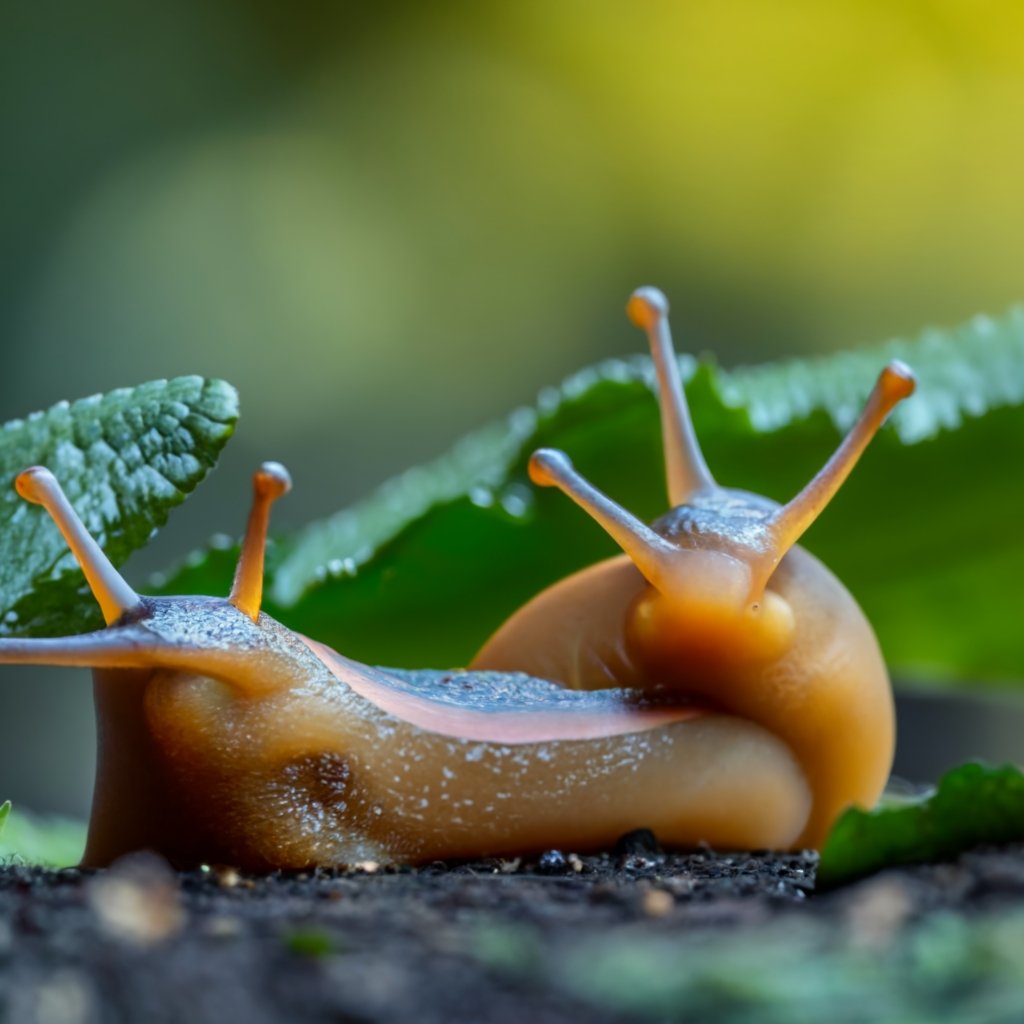
The Nocturnal Lifestyle: Why Do Slugs Come Out at Night?
Slugs, with their slimy bodies and slow movements, have a preference for the cover of darkness. But why is it that slugs come out at night? The nocturnal lifestyle of slugs is not a mere coincidence but a well-adapted survival strategy, deeply intertwined with their biological needs and environmental conditions.
Survival and Predation
Slugs are more active at night primarily to avoid predators. Many of their predators, like birds and humans, are diurnal, meaning they are active during the day. By coming out at night, slugs reduce the risk of being eaten and can roam freely in search of food.
Moisture and Dehydration
Slugs are highly susceptible to dehydration due to their moist bodies. The cooler and more humid conditions at night reduce the risk of drying out, allowing slugs to move around without losing too much water. This is crucial as slugs lack the protective shell that snails have, making them more vulnerable to environmental conditions.
Slime
Slime is pivotal for slugs during their nocturnal endeavors. It acts as a lubricant, facilitating smooth movement over various surfaces while they roam at night. This secretion is crucial, aiding in navigation, protection, and mate attraction, making it a significant aspect of their nightly activities. Recognizing the importance of slime provides valuable insights into managing slug behavior effectively.
Feeding Habits
Night-time also offers slugs a buffet of decaying plant matter, their primary food source. The damp conditions make it easier for them to consume leaves, fungi, and even other slugs, providing them with the necessary nutrients to thrive.
Reproduction
Slugs also prefer the night for mating and laying eggs. The cover of darkness provides them with the privacy and safety needed to reproduce and ensure the survival of their offspring.
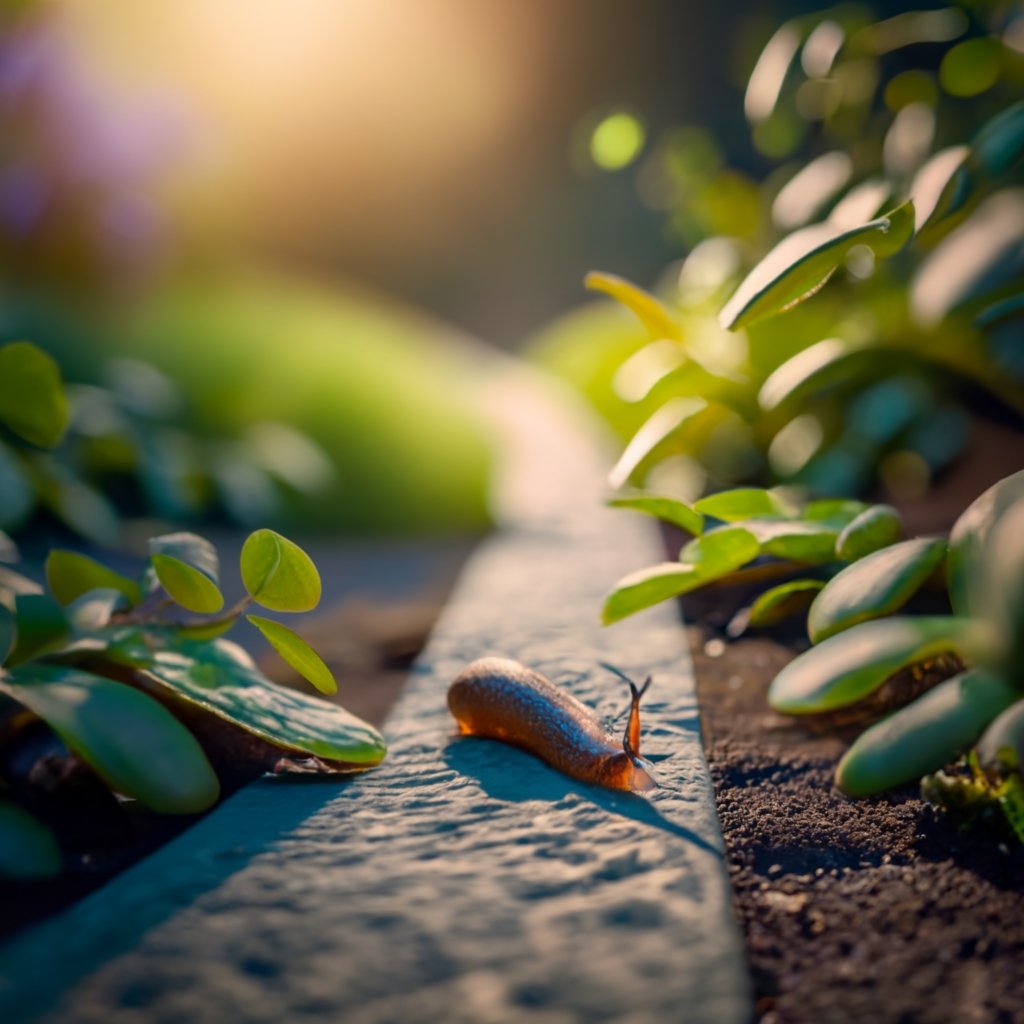
Practical Insights
- Observe and Act: Knowing that slugs are active after dark can help gardeners and homeowners take timely action to control their population.
- Use of Baits and Traps: Setting up baits and traps during the night can be more effective in dealing with slug infestations.
- Regular Inspection: Regularly inspecting the garden and the surrounding areas at night can help in identifying and addressing slug problems early on.
Night-Time Feeding: What Slugs Prefer to Eat After Dark
Slugs, being nocturnal creatures, have a unique dietary pattern that is predominantly active during the night. Understanding what slugs eat after dark is crucial for managing their presence and protecting our gardens and plants effectively.
Decaying Organic Matter
Slugs primarily feed on decaying organic matter, such as leaves and fungi, which are abundant during the night. This not only provides them with essential nutrients but also aids in the decomposition process, contributing to soil fertility.
Plants and Vegetation
Slugs have a penchant for plants, especially those with soft, succulent leaves. They can cause significant damage to seedlings and young plants, leaving behind irregular, hole-ridden leaves as they munch their way through the garden.
Cannibalistic Behavior
Interestingly, slugs are also known to exhibit cannibalistic behavior, where they eat other slugs. This usually occurs when food sources are scarce, and it serves as a survival mechanism, allowing them to sustain themselves in adverse conditions.
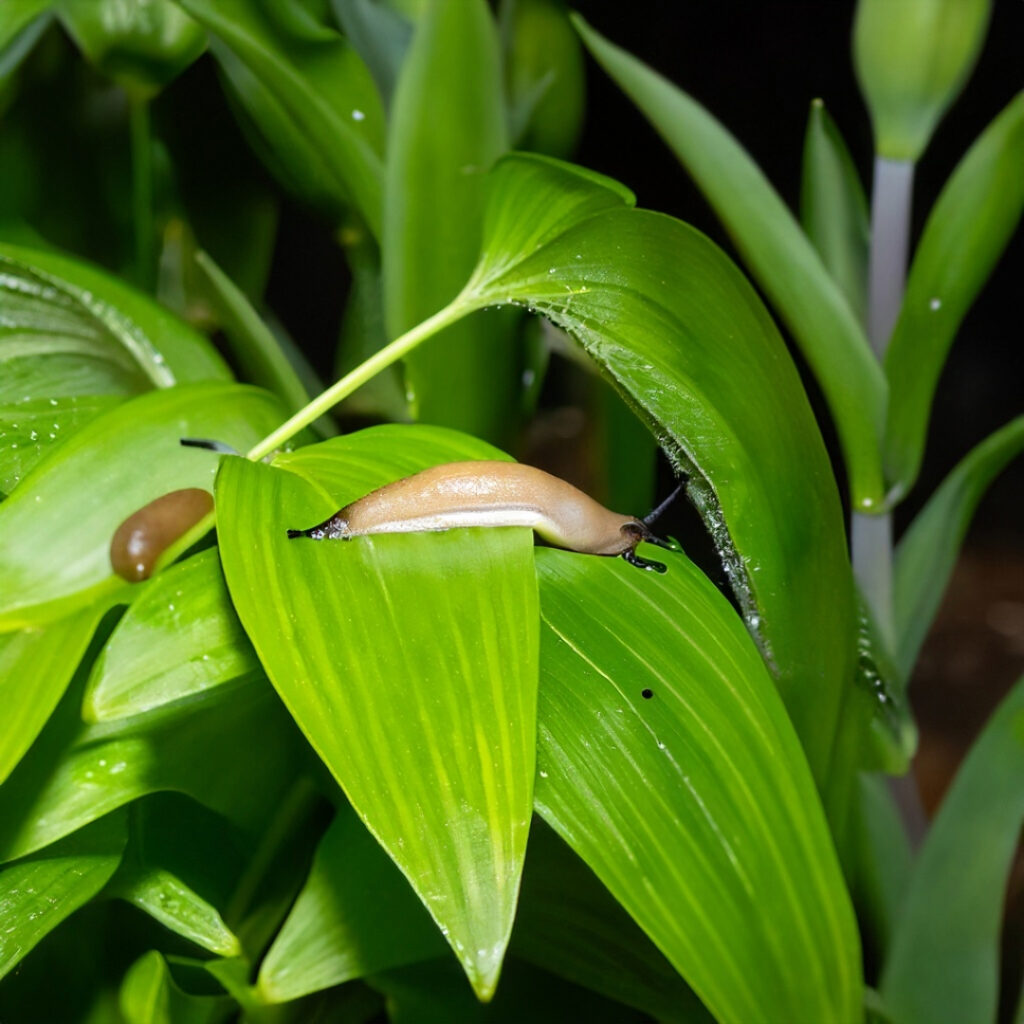
Effective Management Strategies
- Night-Time Inspection: Regularly inspecting the garden at night can help identify slug-infested areas and enable timely intervention.
- Use of Repellents: Applying natural or chemical repellents can deter slugs from feeding on plants and reduce their damage.
- Proper Sanitation: Maintaining cleanliness and removing decaying matter can limit food sources for slugs, controlling their population.
Knowing what slugs prefer to eat after dark is essential in implementing effective control measures. By focusing on their dietary habits and preferences, we can protect our gardens from slug damage and ensure a healthy and thriving ecosystem.
Habitats of the Night: Where Do Slugs Prefer to Emerge?
Understanding where slugs emerge and prefer to inhabit during the nocturnal hours is pivotal for anyone looking to manage and control their population effectively. Slugs have specific habitat preferences that are closely linked to their survival and reproductive needs.
Moist and Damp Environments
Slugs are predominantly found in moist areas, as they lose water quickly and need to stay hydrated. Gardens, woodlands, and fields with high humidity and dampness provide the ideal conditions for slugs to thrive and reproduce.
Underneath Objects
Slugs often seek refuge underneath objects like rocks, logs, and debris, where the environment is cool and damp. These hiding spots offer them protection from predators and the elements, allowing them to rest and conserve energy during the day before becoming active at night. Additionally, they can be found beneath flower pots, wooden planks, and leaf litter, essentially any place that provides moisture and shelter from the sun. These concealed locations are ideal for slugs as they help in maintaining their body moisture and provide a safe haven from the drying effects of the wind and sun.
Vegetation and Plant Areas
Areas with abundant vegetation are a preferred habitat for slugs due to the availability of food. They are often found near the base of plants, where they feed on leaves, stems, and roots, causing damage to the vegetation.
Soil and Mulch
Slugs may also inhabit the soil and mulch, where they lay their eggs and find food. The moist and organic-rich soil provides them with the necessary nutrients and a conducive environment for their offspring to develop.
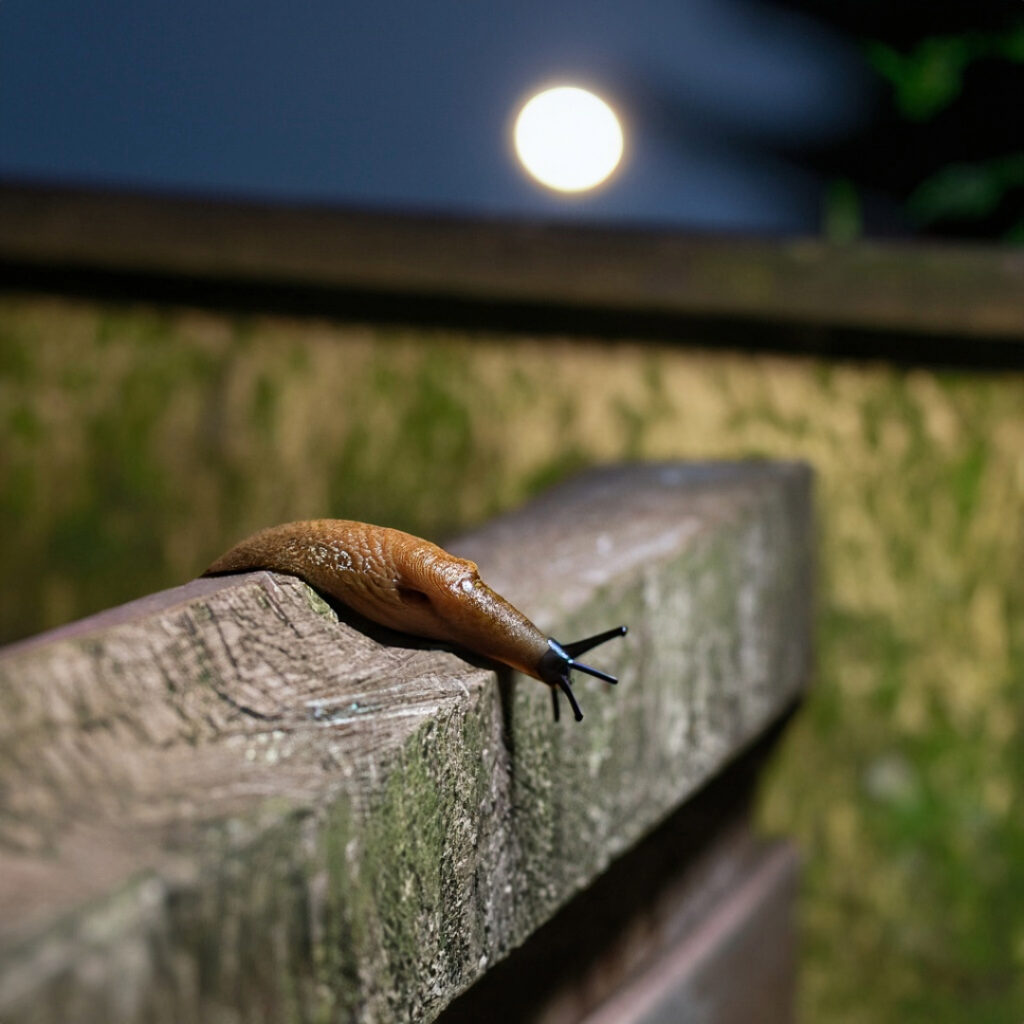
Strategies for Slug Control in Habitats
- Regular Clearing: Removing debris and unnecessary objects can reduce hiding spots for slugs.
- Proper Watering: Avoiding overwatering and ensuring proper drainage can reduce soil dampness and discourage slug inhabitation.
- Use of Barriers: Creating barriers around plants and garden beds can prevent slugs from accessing vegetation.
Identifying where slugs live and prefer to emerge at night is crucial for effective slug management. By targeting their preferred habitats and implementing preventive measures, we can control slug populations and minimize their impact on our gardens and ecosystems.
Protecting the Garden: Controlling Slug Invasion
Slugs, with their nocturnal habits and voracious appetites, can be a significant pest in gardens, causing extensive damage to plants and vegetation. Here’s a detailed guide on how to get rid of slugs and control their invasion during the night, ensuring the well-being of your garden.
Natural Predators
Encouraging the presence of natural predators like birds, frogs, and beetles can be an effective pest control method. These predators eat the slugs, helping maintain a balanced ecosystem and reducing slug populations naturally. Even having a toad or two take up residence can help.
Chemical and Organic Baits
Using baits is a common method to deter slugs. Chemical baits are effective but can be harmful to other wildlife and pets. Organic alternatives, like iron phosphate-based baits, are safer and environmentally friendly, offering a balanced approach to keep slugs at bay.
Barriers and Traps
Creating physical barriers around plants and garden beds can prevent snails and slugs from accessing them. Copper tape, crushed eggshells, and diatomaceous earth are effective barriers that slugs don’t like crossing. Additionally, slugs love beer (but then, who doesn’t). Beer traps can attract and drown slugs, reducing their numbers in your garden.
Proper Garden Sanitation
Maintaining cleanliness in the garden is crucial. Regularly removing fallen leaves, debris, and other hiding places for slugs can disrupt their habitat and reduce their presence. Properly timed watering and avoiding waterlogged conditions can also make the environment less favorable for slugs.
Regular Night-Time Inspection
Since slugs are most active at night, conducting regular inspections after dark can help identify infested areas and enable timely intervention. Removing slugs manually and applying treatments can prevent them from laying eggs and control their population effectively.
Practical Tips for Slug Control
- Choose Safe Baits: Opt for environmentally friendly baits to protect other wildlife.
- Install Barriers: Protect vulnerable plants with effective barriers.
- Maintain Cleanliness: Regular cleaning and proper watering can create an unfavorable environment for slugs.
Protecting your garden from nocturnal slug invasion requires a combination of preventive measures, timely interventions, and sustainable pest control strategies. By understanding the habits of slugs in your garden and implementing effective control methods, you can ensure a healthy, thriving, and slug-free garden environment. You can make your garden less friendly for these pests.
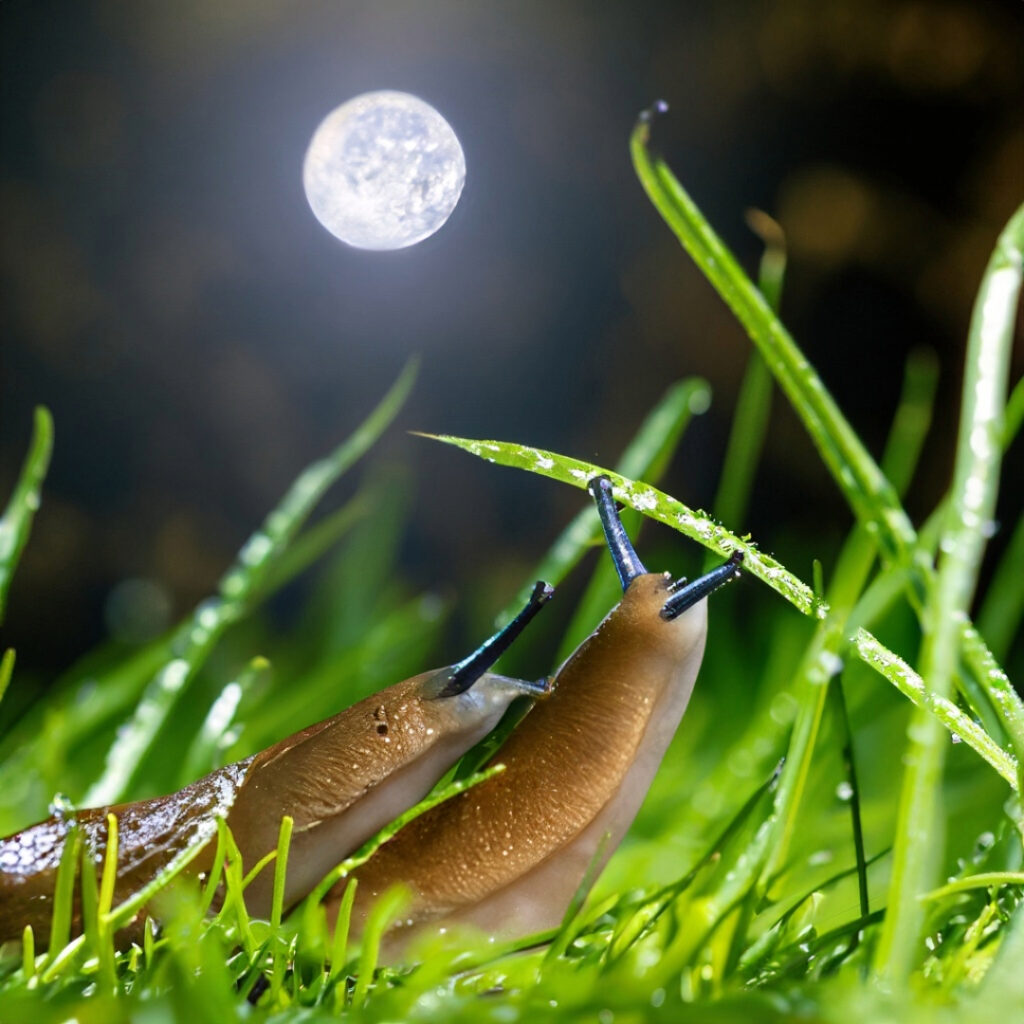
Water and Survival: The Importance of Moisture for Slugs
Dealing with slugs in the house can be a daunting task, especially when they decide to visit during the night. Here are some solutions and preventative measures to manage nocturnal slug intrusion effectively and stop slugs from turning your home into their habitat.
Seal Entry Points
Slugs can enter through small gaps and cracks in doors, windows, and walls. Sealing these entry points is crucial to prevent them from infiltrating your home. Use weather stripping, sealants, or caulking to block any potential access points and solve the slug problem.
Maintain Indoor Dryness
Slugs are attracted to moist and damp environments. Keeping the indoor areas dry and well-ventilated can make the environment less appealing to them. Use dehumidifiers, fix leaks, and ensure proper ventilation to maintain low humidity levels indoors.
Clean Food Residues
Food residues and crumbs can attract slugs. Regular cleaning of food spills and proper storage of food items can deter slugs from entering your home in search of food. Ensure that kitchen areas are clean and that food is stored in sealed containers.
Use Slug Traps and Baits
Placing slug traps and baits near entry points can help catch slugs before they venture further into your home. Opt for pet-friendly and non-toxic baits to ensure the safety of other household members and pets.
Preventative Measures
- Regular Inspection: Check for signs of slugs regularly, especially in damp and secluded areas.
- Immediate Removal: If you spot a slug, remove it immediately to prevent it from laying eggs.
- Garden Maintenance: Proper garden maintenance can reduce slug populations outside, decreasing the chances of indoor intrusion.
Managing nocturnal slug intrusion requires vigilance, preventive actions, and timely interventions. By creating an unfavorable environment for slugs and addressing the issue promptly, you can keep your home slug-free and maintain a comfortable and healthy living space.
Baiting Slugs: Night-Time Solutions to Control Population
Controlling the population of slugs is crucial to protect plants and properties. Here’s an overview of various baits and solutions that can be effectively used to manage these nocturnal creatures during the night.
Chemical Baits
Chemical slug and snail bait are widely available and effective in reducing their population. However, they can be harmful to pets and other wildlife, so it’s essential to use them cautiously and place them in areas where only slugs can access them.
Organic Baits
For a more eco-friendly approach, organic baits containing iron phosphate can be used. These are safer for pets and wildlife but are equally effective in controlling slugs. They work by causing the pests to stop feeding, eventually leading to their demise.
Beer Traps
A simple and popular method is to use beer traps. The yeast in the beer attracts slugs, and once they fall into the trap, they are unable to escape and drown. Place these traps near areas where you see slugs frequently for best results.
Effective Baiting Tips
- Proper Placement: Locate baits near slug habitats for maximum effectiveness.
- Regular Monitoring: Check and replace baits regularly to maintain their efficacy.
- Safety Precautions: Use baits responsibly to avoid harming non-target animals and the environment.
Choosing the right bait and using it effectively is key to controlling slug populations at night. Whether opting for chemical, organic, or homemade solutions, responsible usage and regular monitoring can ensure a slug-free and balanced ecosystem.
Varieties of Nocturnal Slugs: Understanding Different Types
Slugs are diverse creatures, and understanding the different types and varieties is essential to manage them effectively. Here’s a closer look at the various kinds of slugs and their unique nocturnal behaviors.
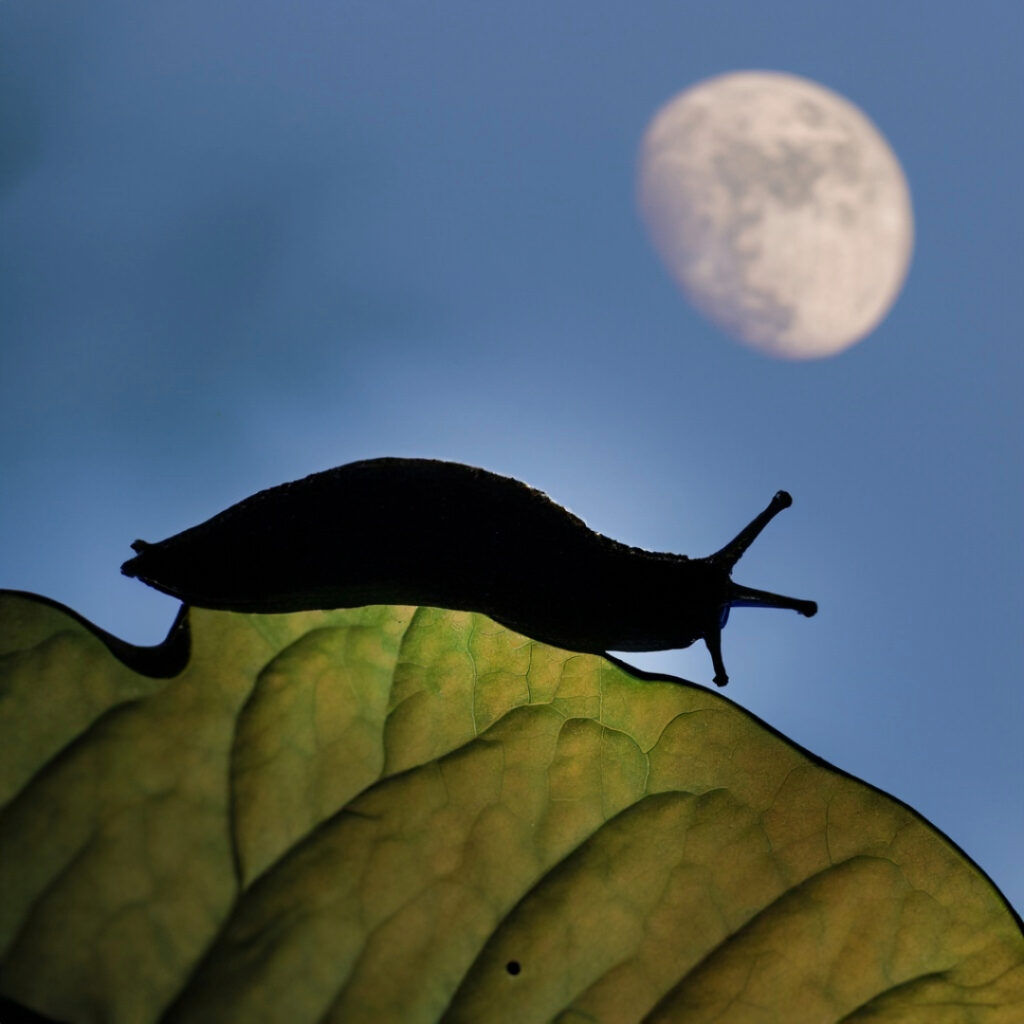
Common Garden Slug
This variety is often found in gardens and is known for its voracious appetite for plants. They are usually out at night, seeking food and moisture.
Leopard Slug
Recognizable by its distinctive spots, the Leopard Slug is one of the many slugs that are also out and about at night. It is known for its ability to climb and its preference for decaying organic matter.
Banana Slug
This slug is known for its bright yellow color and is primarily found in forested areas. It is nocturnal and feeds on dead plant material, fungi, and animal detritus.
Field Slug
Typically found in open fields, this slug variety prefers young plant shoots, making it a significant agricultural pest. It is most active during damp, cool nights.
Identifying Features of Nocturnal Slugs
- Color and Pattern: Different varieties have unique colors and patterns, aiding in identification.
- Size and Shape: The size and shape of slugs can vary, providing clues to their variety.
- Habitat Preference: The preferred habitat can indicate the likely varieties present in an area.
Understanding the different varieties of nocturnal slugs and their behaviors is crucial for effective management and control. By recognizing their identifying features and habits, one can implement targeted strategies to mitigate their impact on gardens and agriculture.
Conclusion
In conclusion, slugs are intriguing creatures with a penchant for nocturnal activity. This article has looked at how they behave at night, including where they live, what they eat, and how they look. We’ve explored why slugs come out at night, their variety, and nocturnal behavior. This provides understanding of their lifestyle and challenges for gardeners and homeowners.
To effectively manage slugs, you need to understand how they behave, what they like, and where they live. To lessen the effect of these nighttime visitors on our gardens and homes, we can do a few things. First, we should use the right control measures. Second, we need to keep the environment clean and dry. Lastly, we can use baits and deterrents that work well. If you have slugs inside or outside, knowing what to do quickly is important.
